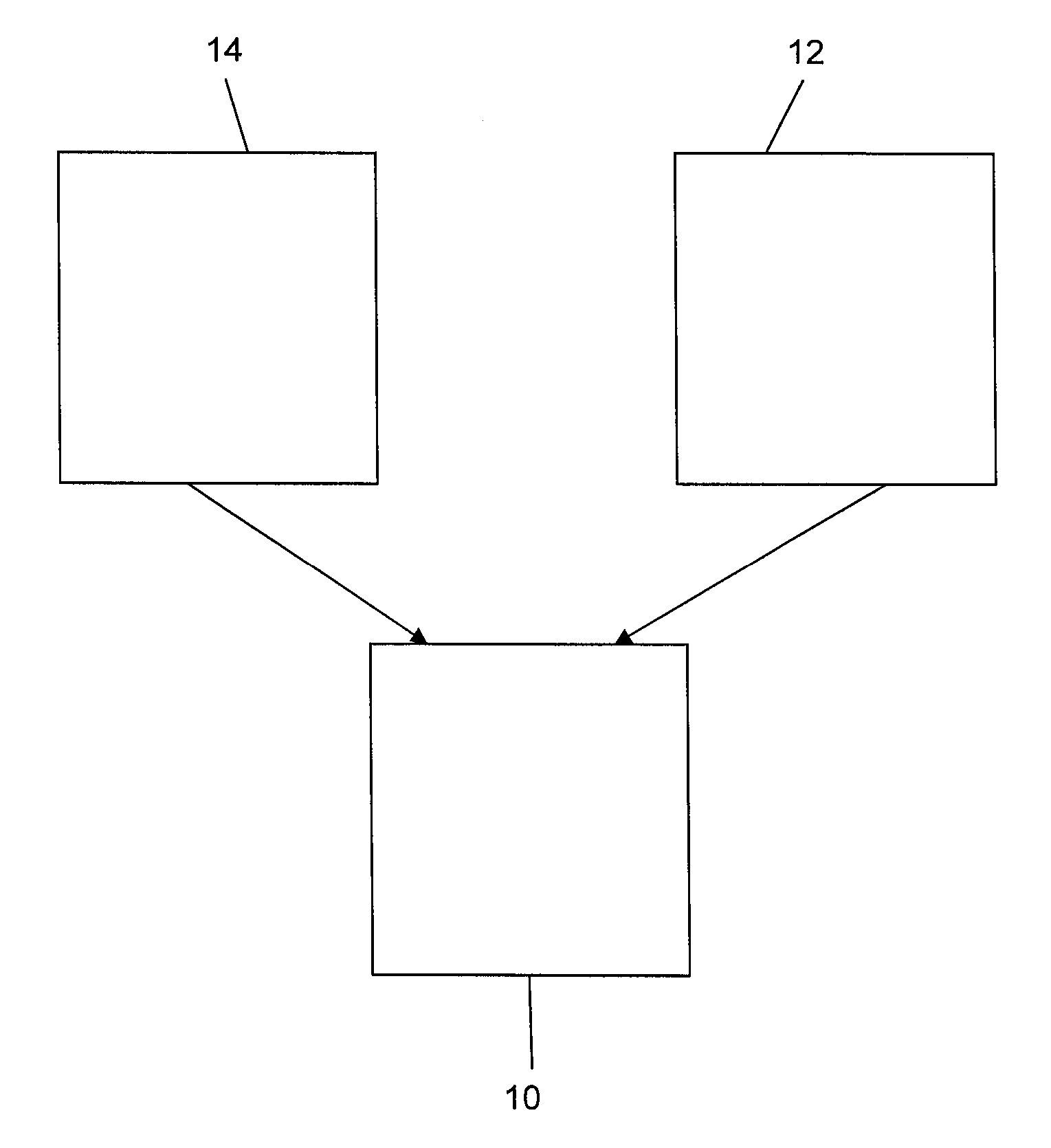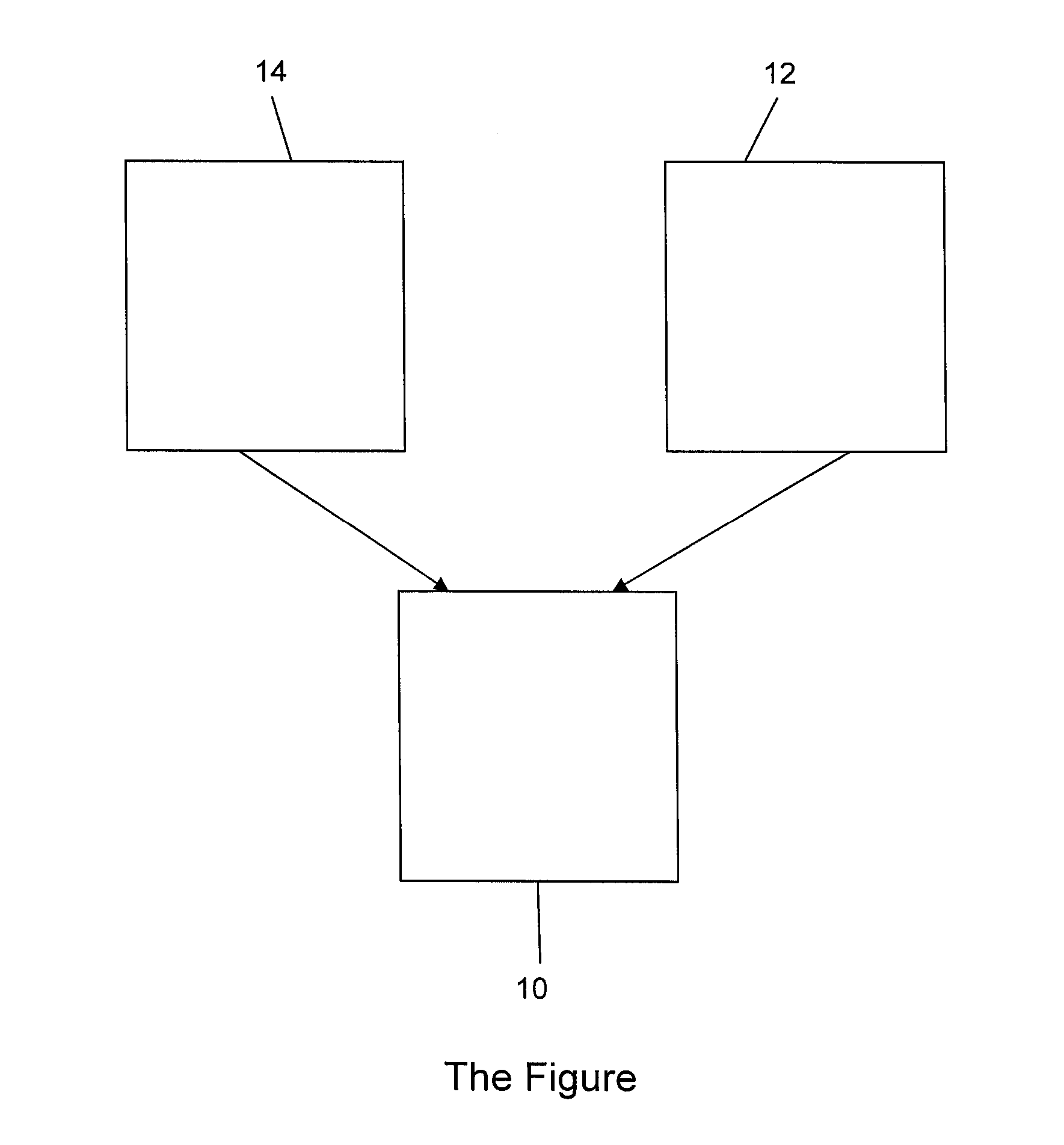Hydrogen and ammonia fueled internal combustion engine
a technology of ammonia and internal combustion engine, which is applied in the direction of machines/engines, non-fuel substance addition to fuel, mechanical equipment, etc., can solve the problems of limited success, difficult fuel use, and low combustion efficiency of ammonia
- Summary
- Abstract
- Description
- Claims
- Application Information
AI Technical Summary
Problems solved by technology
Method used
Image
Examples
Embodiment Construction
[0008]A spark ignited internal combustion engine 10 has been developed with a dual fuel system, including hydrogen supply tank 12 and an ammonia supply tank 14 (see the FIGURE) and a special engine control system including special software. The engine control system starts the engine on either hydrogen or on a combination of hydrogen and ammonia where in the latter case the percentage of hydrogen is adjusted to ensure proper starting. Once the engine is running the engine control system adjusts the percentage of hydrogen needed for proper operation. The percentage of hydrogen can be from about 5% to 100%, while the percentage of ammonia can be from 0% to about 95%. Ammonia provides greater power and requires less storage space and is therefore the preferred fuel. The preferred way to operate the engine is to start with a hydrogen rich mixture and slowly decrease the percentage of hydrogen until the minimum amount required for proper engine operation is achieved. This minimum will be...
PUM
 Login to View More
Login to View More Abstract
Description
Claims
Application Information
 Login to View More
Login to View More - R&D
- Intellectual Property
- Life Sciences
- Materials
- Tech Scout
- Unparalleled Data Quality
- Higher Quality Content
- 60% Fewer Hallucinations
Browse by: Latest US Patents, China's latest patents, Technical Efficacy Thesaurus, Application Domain, Technology Topic, Popular Technical Reports.
© 2025 PatSnap. All rights reserved.Legal|Privacy policy|Modern Slavery Act Transparency Statement|Sitemap|About US| Contact US: help@patsnap.com


